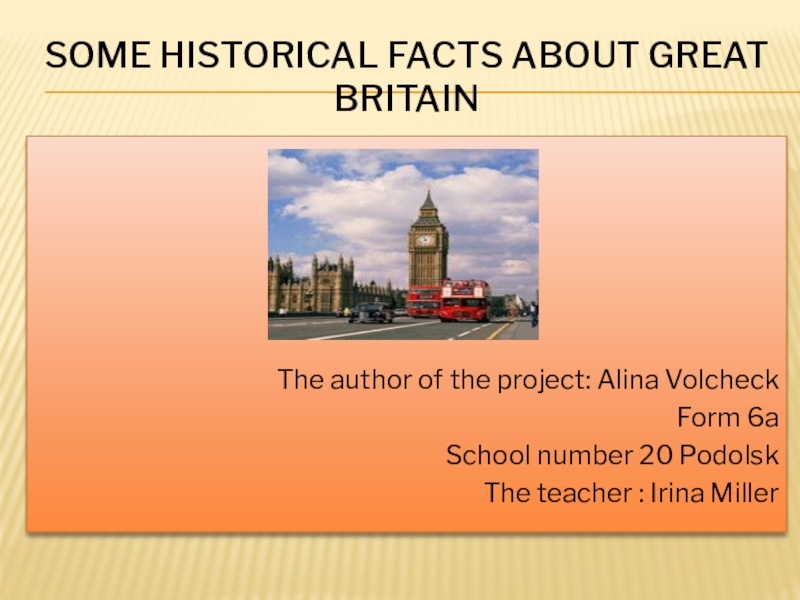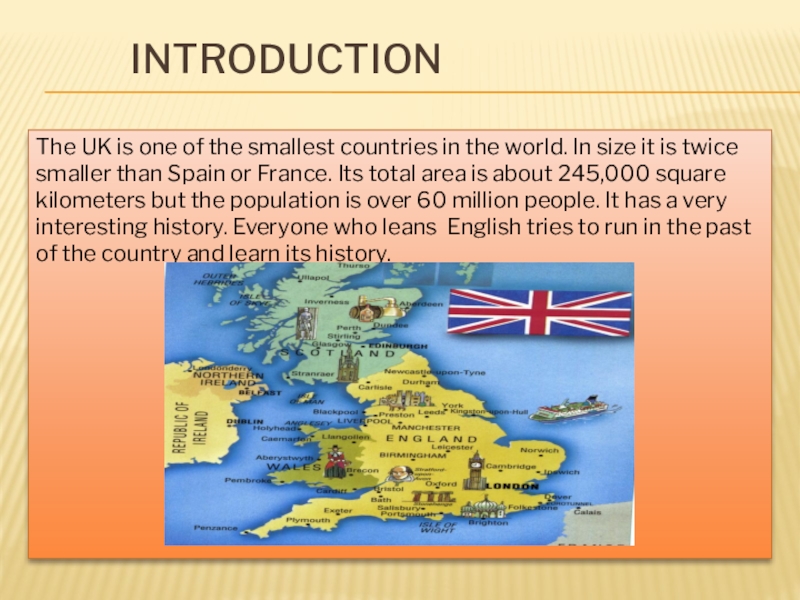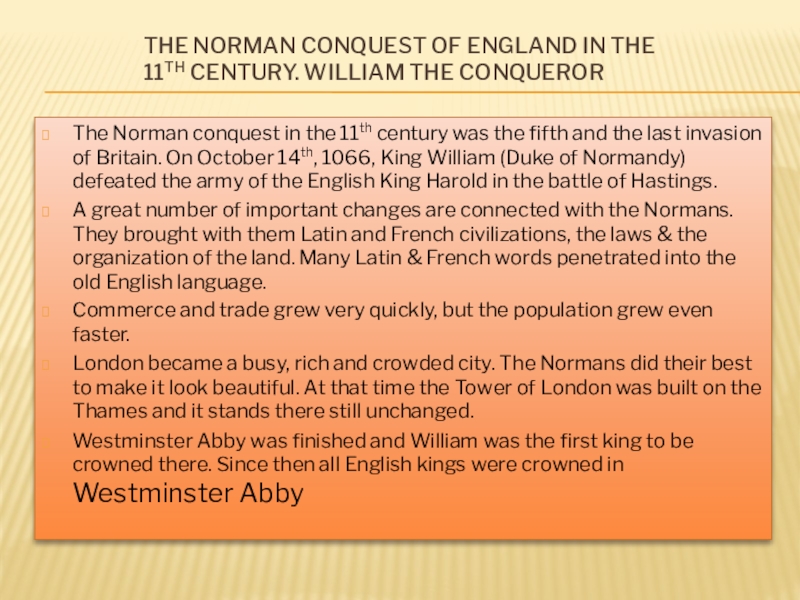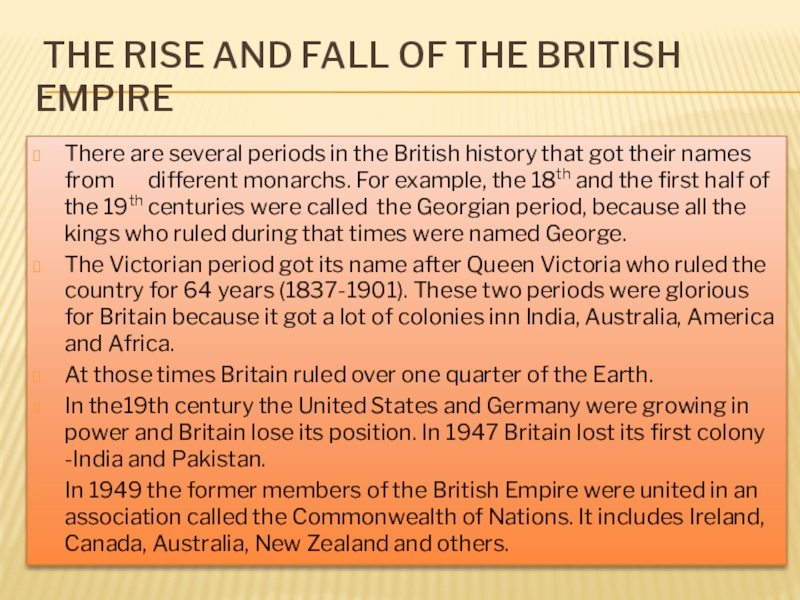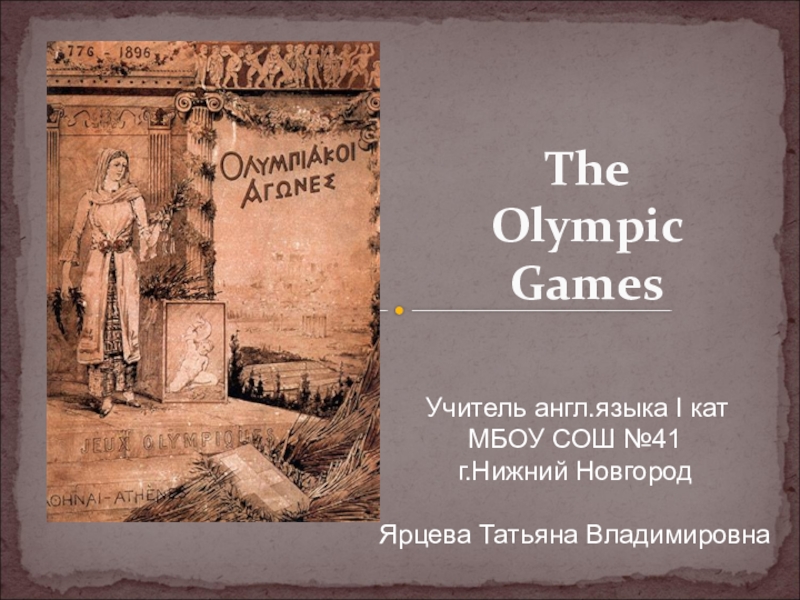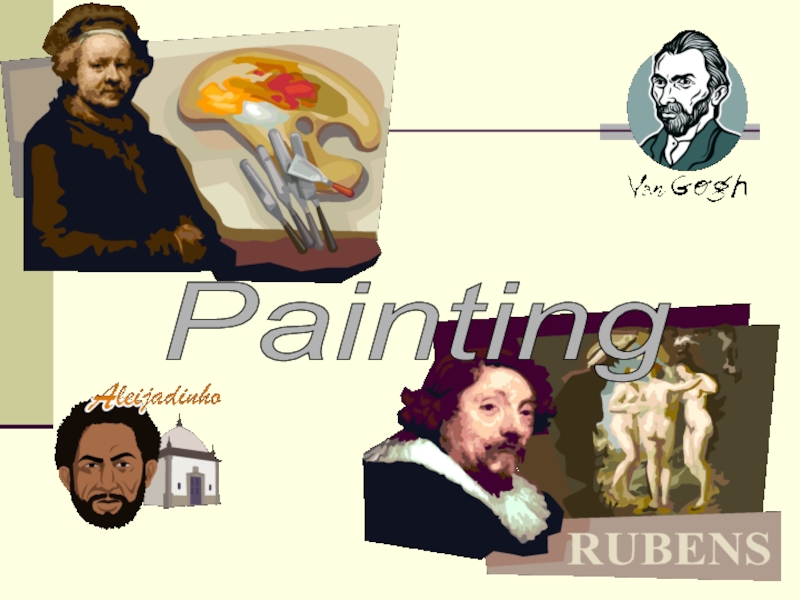- Главная
- Разное
- Образование
- Спорт
- Естествознание
- Природоведение
- Религиоведение
- Французский язык
- Черчение
- Английский язык
- Астрономия
- Алгебра
- Биология
- География
- Геометрия
- Детские презентации
- Информатика
- История
- Литература
- Математика
- Музыка
- МХК
- Немецкий язык
- ОБЖ
- Обществознание
- Окружающий мир
- Педагогика
- Русский язык
- Технология
- Физика
- Философия
- Химия
- Шаблоны, фоны, картинки для презентаций
- Экология
- Экономика
Презентация, доклад Historical facts about Great Britain
Содержание
- 1. Презентация Historical facts about Great Britain
- 2. To find the most interesting historical facts about Great BritainAim of the Project:
- 3. Tasks of the project: To learn additional
- 4. IntroductionThe UK is one of the smallest
- 5. How did English history start?About three thousand
- 6. The tribes of Celts (the 6 the
- 7. Romans invade Britain (the 1st century ad)The
- 8. The Britons (the descendants of Celts) had
- 9. The anglo-Saxon conquest of Britain (the 5th
- 10. Danish invaders. Vikings. (the end of the
- 11. The Norman Conquest of England in the
- 12. Robin Hood One of the legendary heroes
- 13. Robin Hood was the great
- 14. The great charter and how the english
- 15. Britain in the middle agesDuring the Middle
- 16. The war that was within the country
- 17. Finally, the Tudors won and came to the throne.
- 18. The Tudors In the 16th century the powerful Tudor Dynasty ruled Britain
- 19. The plagueIn June 1665 the greatest epidemic
- 20. The great fire of londonA year later
- 21. Sir christopher wrenThe famous architect took part in rebuilding the city after the fire.
- 22. Oliver cromwellKing Charles I did not like
- 23. British parliament
- 24. the rise and fall of the
- 25. The queen of britainThe queen of Great
- 26. Queen`s residenceBuckingham Palace has got 775 rooms.
- 27. ConclusionWe have known a lot of interesting
- 28. literatureEnglish –speaking countries (страноведческий справочник)
- 29. The Internet resourseshttps://ru.wikipedia.org/wiki/%D0%9A%D0%BE%D1%80%D0%BD%D1%83%D0%BE%D0%BB%D0%BB http://oxfordklass.com/interestingengland/
Слайд 1Some historical facts about Great Britain
The author of the project: Alina
Form 6a
School number 20 Podolsk
The teacher : Irina Miller
Слайд 3Tasks of the project:
To learn additional information about the history of
To represent facts of work in the form of presentation.
Слайд 4Introduction
The UK is one of the smallest countries in the world.
Слайд 5How did English history start?
About three thousand years (BC) people came
So those people who lived on the territory of Great Britain in the earliest times were of the Iberian origin. The Iberians used stone weapons and tools.
One of the mysterious monuments of prehistoric Britain is Stonehenge. It was constructed before 2000BC and is the trace of the ancestors of the British people. Stonehenge is a circle of huge stone slabs. It`s situated in the southern part of England.
Слайд 6The tribes of Celts (the 6 the century)
In the 7th century
The Britons were the most powerful of all the Celtic tribes and they occupied most of the country. They chose land along the rivers or near the coasts of the sea. What they did was fishing, growing wheat and breeding sheep in the meadows.
The Iberians were weak compared to the Celts. They couldn`t fight back because the Celts were well- armed with spears, swords and axes.
Hardly anything is left of the Celtic languages except for the names of some rivers- The Thames, the Mersey, the Seven, and the Avon and two large cities –London and Leeds.
Слайд 7Romans invade Britain (the 1st century ad)
The Roman Empire became extremely
Romans first attacked Britain in 55-54 BC under Julius Caesar. But they really conquered Britain in the 1st century AD, in 43 AD when the Roman Emperor Claudius decided to make Britain part of the Roman Empire. And Britain became one of its provinces. They forced the population to pay tribute.
The Romans kept their armies in Britain. They had the country under control. They drove their barbaric enemies, the Scots to the mountains of Ireland and the Picts to the mountains of the far north. To protect themselves the attacks of the Picts, the Romans built the wall known as Hadrian`s Wall -120km long and 4m high was built by Emperor Hadrian and is well-known all over the world.
Слайд 8The Britons (the descendants of Celts) had given history a famous
An interesting historical fact…
Many Britons obeyed the Romans. And it became clear that nothing could stop the Romans, but some of them revolted and in 61 AD the Iceni tribe (which is now East Anglia) led by their queen. Boadicea, revolted. She destroyed their capital Londinium (London now) before the Romans defeated her. Boadicea thought that death would be better than captivity and, as it is written in the history books, first she gave poison to her daughters and, then took it herself. When the Roman soldiers found her she was already dead.
To this time perhaps belongs the origin of London as a city. London attain its importance under the Roman rule.
Слайд 9The anglo-Saxon conquest of Britain (the 5th century)
The Celts remained independent
Of all three tribes, the Angles became the strongest. Later two tribes of the Angles and Saxons united and were called Anglo-Saxons who are the ancestors of the English. They called their speech English and their country – England, that is “the Land of Angles”. The British Celts (Britons) fought the raiders. So the Britons had to go to the mountains in the far West and settle there. The Saxons called that place “Weallas”, or ”Wales” meaning “the land of foreigners”. This part of Britain is called Wales now,
Anglo-Saxons founded 10 separate kingdoms, the most powerful of which were Wessex, Sussex, Essex, Kent, East Anglia, Mercia, and Northumbria. These seven are known as heptarchy & they are now the countries of Great Britain.
Слайд 10Danish invaders. Vikings. (the end of the 8th century)
At the end
During the 8th and 9th centuries there were also Scandinavian invaders who wanted to conquer Britain. They were the Vikings. They came from Norway, Sweden, Denmark and were called Norseman.
They made York the capital of their kingdom. The Vikings brought their language, traditions, art and built towns in England. The English got rid of the Vikings only in the 10 century.
Слайд 11The Norman Conquest of England in the 11th century. William the
The Norman conquest in the 11th century was the fifth and the last invasion of Britain. On October 14th, 1066, King William (Duke of Normandy) defeated the army of the English King Harold in the battle of Hastings.
A great number of important changes are connected with the Normans. They brought with them Latin and French civilizations, the laws & the organization of the land. Many Latin & French words penetrated into the old English language.
Commerce and trade grew very quickly, but the population grew even faster.
London became a busy, rich and crowded city. The Normans did their best to make it look beautiful. At that time the Tower of London was built on the Thames and it stands there still unchanged.
Westminster Abby was finished and William was the first king to be crowned there. Since then all English kings were crowned in Westminster Abby
Слайд 12Robin Hood
One of the legendary heroes of those times was Robin
Слайд 14The great charter and how the english parliament started
For about two
In 1265 a council of 25 barons was chosen to take control over the King .
That was the beginning of The English Parliament.
The word “parliament” is of French origin meaning “a meeting for the discussion”. Later in 1350 the Parliament was divided into two houses.
Слайд 15Britain in the middle ages
During the Middle Ages Englishmen suffered from
The 14th century was a century of social unrest because in the 1330`s England began a long struggle against the French throne. This war with France lasted for hundred years but is known as the Hundred Years` War(it began in 1337and came to an end in 1453). The French won and forced the English to leave France. People of England were tired of the war with France.
Слайд 16The war that was within the country was called the War
Слайд 19The plague
In June 1665 the greatest epidemic of the Bubonic Plague
Слайд 20The great fire of london
A year later after the Plague, in
Слайд 22Oliver cromwell
King Charles I did not like the idea of Parliament,
Слайд 24 the rise and fall of the british empire
There are several
The Victorian period got its name after Queen Victoria who ruled the country for 64 years (1837-1901). These two periods were glorious for Britain because it got a lot of colonies inn India, Australia, America and Africa.
At those times Britain ruled over one quarter of the Earth.
In the19th century the United States and Germany were growing in power and Britain lose its position. In 1947 Britain lost its first colony -India and Pakistan.
In 1949 the former members of the British Empire were united in an association called the Commonwealth of Nations. It includes Ireland, Canada, Australia, New Zealand and others.
Слайд 25The queen of britain
The queen of Great Britain is the head
Слайд 27Conclusion
We have known a lot of interesting facts how the history
I was very interested in the facts of British history and hope to continue looking for another information.
The UK is full of other mysterious facts. I am ready to learn all of them.
